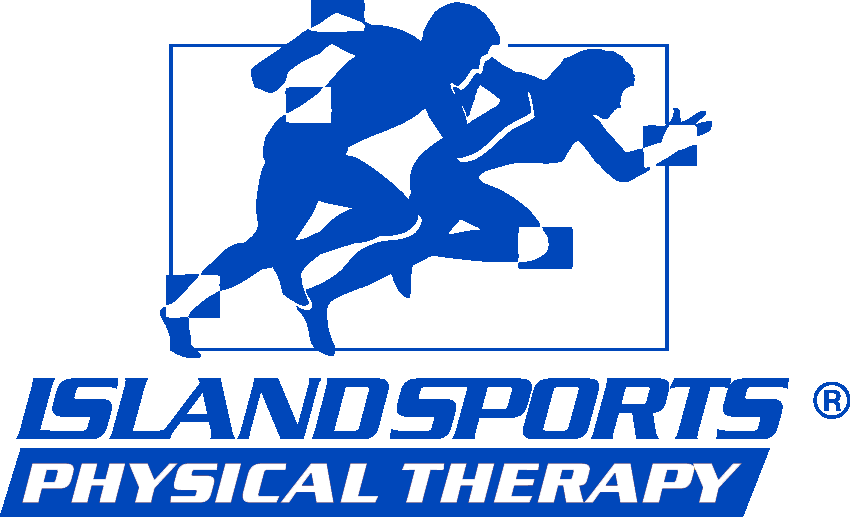
Physical Therapy for Fractures
In the unfortunate case of suffering a bone fracture, (also known as a broken bone), the injury can be very painful, and the recovery can be very tedious. As the human skeleton has such a large quantity of bones, recovery time and rehabilitation methods will vary. For example, a broken finger should be treated very differently than a broken tibia. After a bone has been fractured, visiting a physical therapist can help make sure your bone is healing properly, and on the right track to functioning normally in the long-term.
For many fractures, a physical therapist can reset the alignment of the affected bone through a process called reduction. This is to make sure the bone is in the right place and does not heal in an improper position. Improper healing could lead to worse complications in the future. In more serious cases, a surgeon may have to surgically cut through the skin and muscle tissue to ensure the alignment is correct. In this case, screws and brackets may be installed to ensure the bone pieces can properly fuse together.
While the bone is healing, patients are often instructed to avoid any movement in the affected area. Because of this, the process of gradually being able to use the said area again can be difficult. A physical therapist can help the patient return their once-injured part faster and properly. Depending on what bone was affected, the patient may be given as an assistive devices such as a sling or a pair of crutches. When at the physical therapist’s office, the PT will assess the progress of your recovery, and gauge how you have progressed in terms of motion, strength, overall pain in the area, etc.. By evaluating where you are in the recovery process, the physical therapist can recommend appropriate exercises, pain management techniques, or proper rest, to make sure the bone recovers correctly.
Island Sports Physical Therapy can help you recover from your recent bone fracture, every step of the way. From reducing the bone, to getting back to full strength, Island Sports Physical Therapy can help you getting moving again, and feeling your best.

What is a S-I Joint Dysfunction?
The sacroiliac joint lacks the motion of elbow and knee joints, yet it sustains injury far more frequently. In comparison to other joints the sacroiliac joint is reinforced by ligaments and is very sturdy, which begs the question of why a joint that is well protected is prone to damage. When we move, lift objects, or are impacted our back serves as a pivot for our body and helps us retain our balance. The lower back or sacral region is the axis of our balance and the joints which hold it in place receive a tremendous about of shock from impact.
For the sacroiliac joint to dysfunction you would need to have an immoderately low or high amount of regular pressure being put on your lower back. By moving infrequently or being in constant motion you may cause dysfunction in your sacroiliac joint. The amount of pressure being put on the sacroiliac joint decides whether or not it will dysfunction, aside from pregnancy increasing risk of sacroiliac joint dysfunction there is no known medical condition that this dysfunction is derived from.
There are several methods of treating sacroiliac dysfunction and the most commonly recommended treatment is physical therapy. A medical professional can administer cortisone injection followed by a numbing agent to reduce the pain and inflammation in your joint. Cortisone is a steroid hormone released by your adrenal glands and may cause a rise in blood sugar or an infection. Physical therapy may require more dedication, but it presents no immediate health risk and not only can physical therapy correct sacroiliac dysfunction it can assist with strengthening the joints to prevent future injury.
If you are looking for qualified physical therapists and service local to Long Island, then consider contacting Island Sports Physical Therapy. With six locations throughout Long Island and an expansive variety of services Island Sports Physical Therapy can assist you with any injuries and complications.

Frozen Shoulder
Adhesive capsulitis, more commonly known as frozen shoulder, is a condition in which the glenohumeral joint (shoulder joint) tissue becomes inflamed. This results in difficulty of motion, and chronic pain in the shoulder area. While the cause of frozen shoulder is unclear to orthopedists and physical therapists, there are a variety of treatment options used by physical therapists to treat this condition.
The condition of frozen shoulder is often classified into three phases:
- Stage one is “freezing.” – This is when pain in the shoulder becomes more severe, and motion is slowly lost.
- Stage two is “frozen.” – At this point, the pain may decrease, but the shoulder is still very stiff.
- Stage three is “thawing.” –At this stage, movement in the affected area slowly improves.
While anti-inflammatory drugs can be used to relieve the pain and swelling caused by this condition, the incorporation of joint mobilization techniques can help get the shoulder moving again. Joint mobilization is a type of physical therapy that applies specific force to the affected joint, in order to restore normal range of motion. This technique utilizes five levels of mobilization, depending on the condition the patient is in.
Island Sports Physical Therapy are the experts in joint mobilization techniques. If you are experiencing frozen shoulder, or any other type of restricted motion in your shoulders, elbows, ankles, knees, hips or neck, consider coming to Island Sports Physical Therapy for an examination. With six convenient locations throughout both Nassau and Suffolk counties, Island Sports Physical Therapy is able to serve the entire Long Island Community.

#ChoosePT
Each year, the American Physical Therapy Association wants you to focus on your long-term health. The #ChoosePT movement was designed to show patients why physical therapy should be their first choice for pain management. While opioids and surgery can help prevent discomfort, physical therapy has been shown to produce similar results with less downside.
Despite helping individuals no longer feel pain, opioids do not fully treat the problem. The reason why you are no longer in physical distress when taking opioids is because they prevent the brain from receiving pain signals. Physical therapy is not only effective in treating the ailment, but can help you prevent this from happening again. Opioids can still be useful in pain management, but not on their own. The CDC recommends patients to use both medication (at a low dosage) and physical therapy for relief.
Despite surgery being a necessary step in the recovery process, there is evidence supporting physical therapy as not only being equally effective, but also cheaper as well. Using physical therapy to recover from injuries such as spinal stenosis and rotator cuff tears has been documented to be just as successful as surgery. Another benefit is the hands-on role you have in your own recovery. Your physical therapist will provide you with exercises and the knowledge to treat the issue and learn how to prevent it from happening again.
If you think you can benefit from this form of treatment, consider seeing Island Sports Physical Therapy. Along with treatment, Island Sports Physical Therapy believes every patient should be properly equipped with the education to assist in their own recovery. After all, you may need to continue to do exercises at home after you no longer need to come in. Together, we can help you get off the sidelines and back to the life you had before this condition.

Physical Therapy for Post-fractures
Recuperating from a bone fracture requires more care than simply waiting for the pain to subside. Realignment and proper healing of the bone are the foremost issues involved with treating bone fractures. Typically, a hospital will treat and realign broken bones by having a patient wear a cast then assign a patient to physical therapy to assist the patient with regaining their former mobility.
Fractures themselves are caused by impact, stress, or bone disease with the most frequent among these being stress fractures. A stress fracture is caused by frequent stress being put on a bone, typically athletes are more likely to be affected by this type of fracture. For athletes, completely avoiding stress fractures requires moderating training routines and avoiding putting too much emphasis on a body part. For a competitive athlete stress fractures are an unfortunate reality and the rule of thumb “stop if you begin to feel a problem” is largely intuitive. The only recommendations for properly avoiding fractures is to train through increments rather than crash training. Also, paying attention to the quality of your footwear can be important in avoiding a stress fracture. Cross training can also be a viable option. Using various training routines to improve proficiency in a sport without putting too much burden on a singular area of your body.
The issue with fractures is not the initial fracture, but the fact that you become more susceptible to future injuries where the fracture occurred. After a fracture, has occurred make sure that you seek help from a physical therapist to treat the initial fracture and gain knowledge and training on how to avoid future injuries.
For physical therapy on Long Island, visit Island Sports Physical Therapy! We have six different locations and offer rehabilitation services tailored specifically for athletes.

October is National Physical Therapy Month
National Physical Therapy Month (NPTM) was originally started in 1981 by the American Physical Therapy Association (APTA). While it used to occur in June, the date was moved to October in 1992 so it would not interfere with APTA’s yearly conference. With a new theme each year, the one for 2016 is #ChoosePT. The goal of #ChoosePT is to raise awareness about the benefits of physical therapy as the preferred way to manage pain.
While using opioids is a common treatment for pain management, APTA argues that it may not be the most successful. According to the CDC, one in four individuals who use opioids for a lengthy period of time for pain management will struggle with addiction. By choosing physical therapy, you will be able to effectively treat the affected area and resume your daily routine as a safer alternative. This campaign wants to inform those who are looking to manage their pain that have a choice in how they are treated.
In addition to avoiding the negative side effects of opioids, choosing physical therapy first will not only speed up your recovery time but is the most cost effective. In some cases, choosing this form of treatment can be cheaper than the combination of surgery and pain medication while being equally as effective. For more information on #ChoosePT, you can visit their website as well as view any of their social media posts on Facebook, Twitter and Instagram.
If you reside on Long Island and are considering physical therapy, Island Sports Physical Therapy may be able to help. In addition to treating your injury, your physical therapist will provide you with the necessary information to stay healthy and know what to do if this problem happens again. At Island Sports Physical Therapy, they are committed to providing you with the most effective treatments to help you live a healthy and active life.







